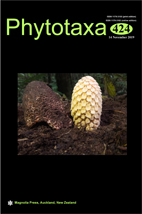Abstract
In the present study, two new filamentous cyanobacterial strains (NUACC12 and NUACC15) were described based on a comprehensive study of morphological characteristics and molecular analyses. The novel strains were isolated from a shallow freshwater pond in the central region of Thailand. The morphological features of both strains are similar to those of Wollea species, W. ambigua, but are different in the dimensions of heterocyte and akinete cells as well as the absence of a sheath around the trichome. Phylogenetic analyses based on 16S rDNA and 16S–23S rDNA internal transcribed spacer sequences (ITS) revealed that new strains formed a robust supported clade which does not belong to the same clade with the type species of other cyanobacterial genera. Moreover, 16S rDNA sequence similarity between new strains and other putatively related taxa such as Wollea, Amphiheterocytum, Sphaerospermopsis, and Raphidiopsis raciborskii ranged from 96.1–97.4%, a level of similarity low enough for separating species differences. The unique patterns of the ITS secondary structure also clearly support two new strains representing a distinct cyanobacterial species. Considering all the results obtained in the present study, we here name the new genus Neowollea gen. nov., with the type species N. manoromense sp. nov. Based on morphology, ecology, 16S rDNA data and D1–D1′ helix structure, we also propose N. salina comb. nov. (basionym Wollea salina) as an additional species in the novel genus. Furthermore, the results of PCR amplification and GC/MS/MS analysis confirmed that two N. manoromense strains could produce an odorous compound, geosmin.

